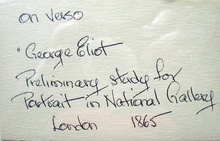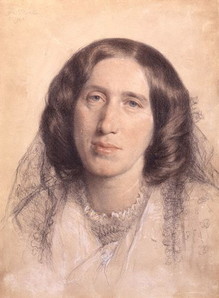Educated in Dublin, the Irish painter Frederic Burton moved to London in 1858, where he joined the pre-Raphaelite circle around Dante Gabriele Rossetti. He was elected a fellow of the Society of Antiquaries and then in 1874, Burton became the third director of the National Gallery.
Around the time Burton settled in London, the British writer Mary Ann Evans (1818-1890) began publishing under the pseudonym of George Eliot. Her romantic novel Romola was released in Cornhill Magazine from 1862 to 1863, and with the proceeds she and her life partner George Henry Lewes moved to a house on Regent’s Park.
In 1864, Eliot wrote about seeing a painting by Burton, in which a mailed knight is kissing the arm of a woman “by an uncontrollable movement.” The work was Hellelil and Hildebrand, the Meeting on the Turret Stairs (1864), now in the National Gallery of Ireland, Dublin. “[It] might have been made the most vulgar thing in the world,” she continued, “[but] the artist has raised it to the highest pitch of refined emotion.” The following year, she arranged to have Burton make her portrait, which is now hanging in the National Portrait Gallery. Princeton holds a preliminary sketch.



